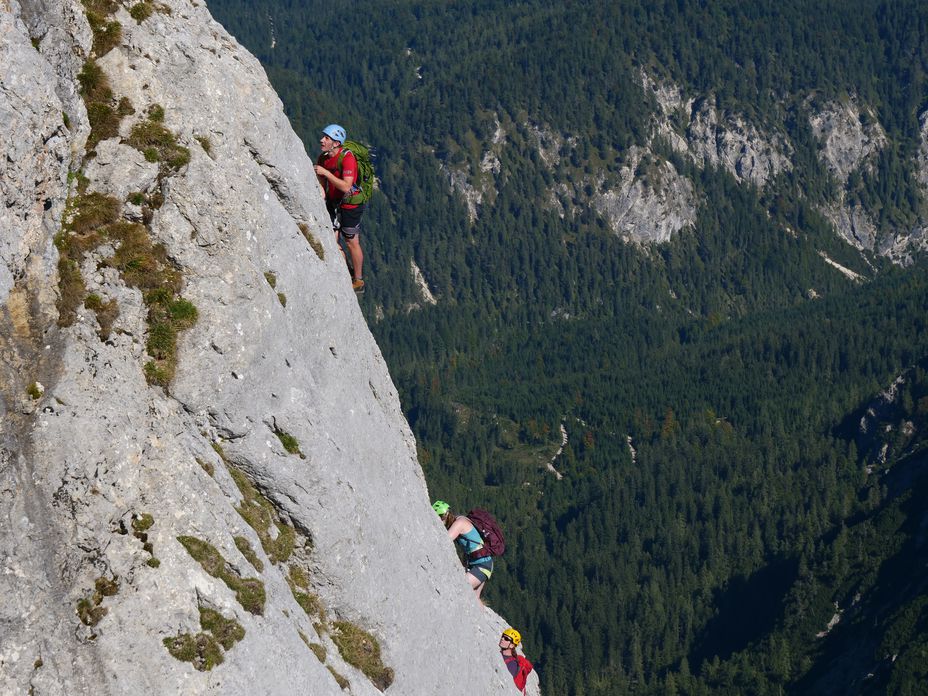We could see the wall they call ‘The Horse’ from the comfort of our alpine hut’s bar. It loomed in the distance; a huge vertical slab of rock about 200m metres in height, casting its long shadow over the green, alpine meadowland below.
“You see that big one? That’s what we’re going up,” our mountain guide told us with alarming nonchalance. With only a little via ferrata experience under my belt, I was feeling a little anxious by this objective. “Are we really going to be able to climb that?” I asked. His response gave no reassurance: “I don’t know, I’ve never tried it.”
“Are we really going to be able to climb that?”
Via ferratas, or klettersteig as they call them in Austria, are exposed routes that are navigated using fixed cables, rungs and ladders. They’re largely associated with the First World War, when soldiers of the opposing Italian and German armies created vast networks of them throughout the high mountains in order to secure vantage points. Most of these still exist, only now they’re used purely for pleasure – if you can call it that.
Here within the Rofan range of Austria’s Brandenberg Alps, the klettersteig are found all over the place. The solid, textured limestone makes for the perfect environment for it – good for fixing reliable bolts and good for reliable hand and footholds. The routes here are surprisingly convenient to access as well. Our transfer from Munich airport the day before had taken less than two hours, followed by a short ride on the cable car up to the Erfurter Hütte, our traditional alpine lodge for the weekend. Fly in to Innsbruck and you’re just an hour’s bus ride from the cable car.
I’d done some via ferrata routes before, but not deliberately. It was on a two-week trek through the Dolomites a few years ago with friends. We hadn’t expected to encounter these kind of routes, but there turned out to be plenty, and we had no option but to take them all on without any of the necessary equipment – in other words, without anything to stop us from falling. That wasn’t much fun.

This time, as I stood at the foot of what looked to be a totally implausible route for a human being to take on, the Achensee 5 Peaks, I was glad to have the full works: helmets, harnesses and ‘cow’s tails’ carabiners.
In one of those, ‘just-don’t-think-about-it moments’, I clipped my via ferrata set onto the cable that had been bolted into the limestone and then followed it upwards towards an overhang about five metres above. Where it went from there, I’d have to find out.
After 10 minutes of climbing I looked down to see air below my feet – and a lot of it. I’m a hiker, not a climber, and I’d never been anywhere near to this far off the ground before. It was a strange feeling, hanging there with one sweaty hand gripping the metal cable and the other hooked desperately into a crack in the rock. 30 minutes later and the drop below me had tripled.


